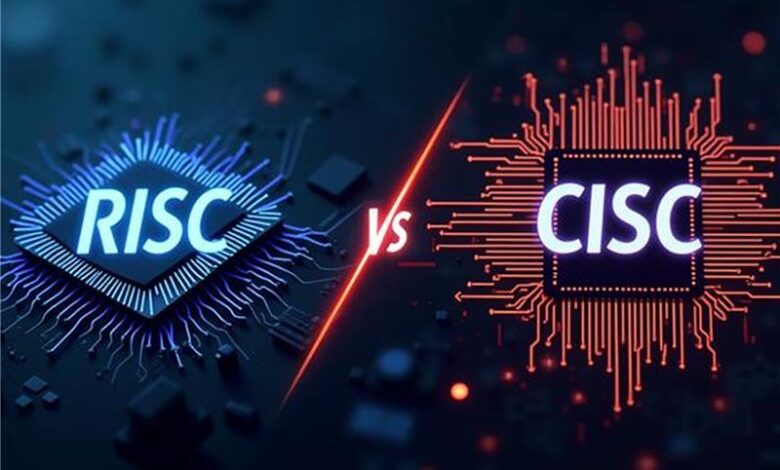RISC vs CISC: The Hidden Tech Battle Powering Your Devices

Every time you unlock your phone, stream a video, or open a spreadsheet on your laptop, there’s a hidden battle happening deep inside the hardware. It’s not a battle you can see, hear, or even feel—but it’s a technical showdown that has influenced computer performance for decades. Welcome to the world of RISC vs CISC.
These terms might sound like jargon from a computer science textbook, but they represent two distinct philosophies behind how processors—also known as CPUs—are designed and how they execute tasks. And whether you’re using a smartphone, gaming console, or office desktop, you’re already depending on one of them.
Let’s break down what RISC and CISC mean, how they work, and why they matter in our everyday lives.
What is RISC?
RISC stands for Reduced Instruction Set Computer. It’s a processor design approach that uses a smaller set of simpler instructions to carry out computing tasks. Think of it as a minimalist style of computing—fewer instructions mean the processor can complete them more quickly, often in just one clock cycle.
Imagine you’re at work and your boss gives you one tiny, clear task at a time: send an email, then print a document, then upload a file. You can knock out each one quickly without overthinking. That’s how a RISC processor behaves—fast, efficient, and specialized.
Because of this streamlined approach, RISC chips tend to use less power and generate less heat. That’s why they’re so common in devices where battery life and energy efficiency are key, like smartphones and tablets.
Some of the most well-known RISC-based processors include:
- ARM chips, which power almost every smartphone on the planet.
- MIPS, historically used in routers and early gaming consoles.
- RISC-V, a newer, open-source processor architecture gaining popularity in tech and academia.
What is CISC?
CISC stands for Complex Instruction Set Computer. It follows a different philosophy—one that focuses on doing more with each instruction. Rather than breaking down tasks into small, simple steps, a CISC processor can handle more complex tasks using single, compound instructions.
Returning to our workplace analogy, imagine your boss says, “Prepare the report, format it, and email it to the team.” That’s one instruction, but it involves multiple steps. It might take you longer to do, but you understand what’s needed and can execute it in one go.
CISC processors aim to reduce the number of instructions a program needs. These chips are great at running software where tasks can be bundled together or where you need the flexibility of many different kinds of operations. That’s why CISC has long been the foundation for most desktop and laptop CPUs.
The most widely used CISC architecture is x86, developed by Intel and used in both Intel and AMD processors.
RISC vs CISC in Everyday Life
Now that you know what RISC and CISC mean, let’s bring it closer to home.
If you’re reading this article on your smartphone, you’re likely using a RISC-based chip. Smartphones rely on energy-efficient processors to maintain battery life, avoid overheating, and handle a range of background tasks quickly.
But if you’re on a traditional laptop or desktop computer, chances are you’re running on a CISC-based x86 processor. These machines are designed to handle more complex programs like video editing, large spreadsheets, coding software, and high-performance games.
So in a typical day, you may unknowingly switch between RISC and CISC devices without giving it a second thought.
Blurring the Lines
Interestingly, the RISC vs CISC debate isn’t as black and white as it once was. Over the years, both types of architectures have started to adopt each other’s strengths.
Modern CISC processors, like Intel’s and AMD’s, actually break down complex instructions into simpler ones internally—much like a RISC chip would. On the flip side, RISC architectures like ARM have added more functionality and features to meet growing performance demands.
The gap between them is shrinking, and today’s processors are more of a hybrid than a strict one-or-the-other approach. Engineers are now focusing on what works best for specific applications rather than following rigid design philosophies.
The Rise of RISC Again
In recent years, RISC has been making a strong comeback—especially with the success of ARM-based chips. A massive milestone was reached when Apple ditched Intel’s CISC-based x86 processors in favor of their custom M1 and M2 chips, built on the ARM (RISC) architecture.
These chips didn’t just save energy—they delivered incredible performance gains, even outperforming many high-end Intel CPUs in certain tasks. That move sent a shockwave through the industry and reignited conversations around the future of processor design.
Meanwhile, RISC-V is quickly gaining ground. As an open-source RISC architecture, RISC-V allows anyone to build custom processors without licensing fees. It’s already being used in universities, research labs, and even by big tech companies exploring chip innovation.
Which One is Better?
It’s tempting to ask which architecture is superior in the RISC vs CISC battle, but the truth is—it depends.
If your goal is power efficiency, simplicity, and speed, RISC is the go-to. That’s why it powers billions of smartphones, smartwatches, and IoT devices.
If your focus is raw performance, software compatibility, and flexibility, CISC still holds a major advantage. It’s the reason why most professional workstations, gaming PCs, and enterprise servers use CISC-based processors.
In reality, the future of computing may not pick one over the other. It’s more likely that we’ll continue to see a blend of both philosophies, tailored to specific needs.
Conclusion
The battle between RISC vs CISC may not be visible on the surface, but it shapes the digital world we live in. One prioritizes simplicity and speed; the other values complexity and versatility. Both have fueled innovation in different directions and contributed to the incredible evolution of computing.
As technology progresses, these architectures will keep adapting. We’re already seeing RISC grow into areas previously dominated by CISC, and vice versa. The real winners in this decades-long debate? Us—the users.
Next time you check your phone or power up your laptop, take a second to appreciate the brilliant engineering powering your experience. Inside that tiny chip is a philosophy, a legacy, and a quiet rivalry that keeps pushing computing forward.
Read also: https://simpcitu.blog/the-best-apps-for-dyslexic-students/



